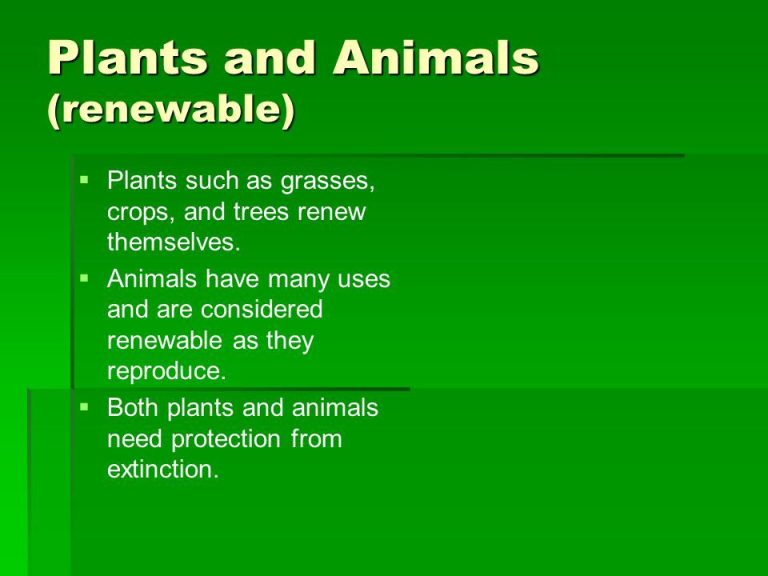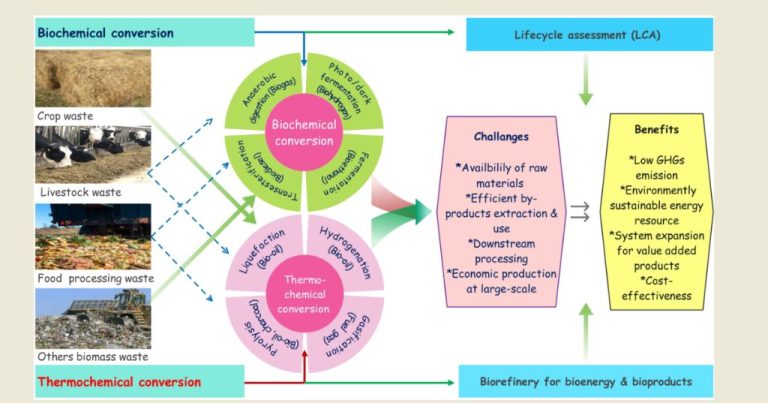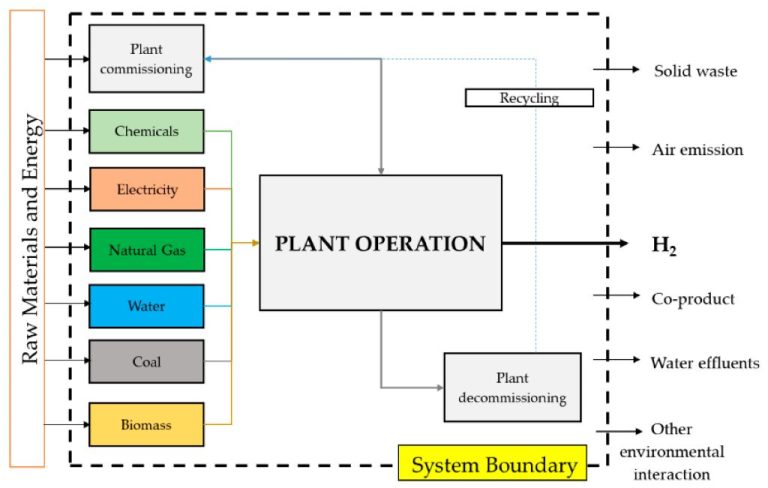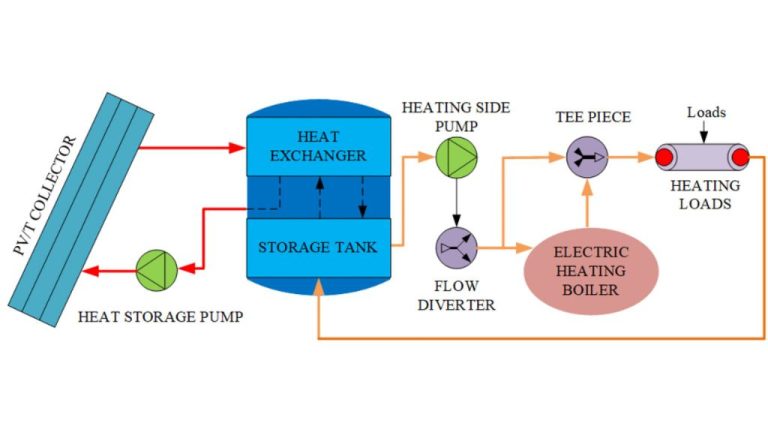What Is A Description Of Biomass?
What is Biomass?
Biomass refers to organic material that comes from plants and animals. It is a renewable energy source generated from organic waste products, residues and byproducts. Biomass contains stored energy from the sun. Plants absorb sunlight during photosynthesis, which converts it into chemical energy in the form of natural organic compounds. When biomass is burned, the chemical energy is released as heat that can be used to generate electricity, power industrial processes or heat homes and buildings.
Common examples of biomass sources include:
- Wood and wood processing wastes – sawdust, timber slash, wood chips, bark
- Agricultural residues – straw, stover, sugarcane bagasse, coconut husks, poultry litter
- Food wastes – spoiled food, restaurant cooking oils, fats, greases, uneaten food
- Animal manure and human sewage
- Industrial waste and co-products – black liquor, manufacturing scraps, fabric scraps
- Municipal solid waste – paper, cardboard, garden waste, landfill gas
- Crop residues – corn stover, rice husks, coconut shells
- Dedicated energy crops – fast growing trees, grasses, algae
In summary, biomass represents all biologically-derived matter that can be used as fuel or for industrial production. It excludes fossil fuels which take millions of years to form. Biomass energy production utilizes organic waste materials that would otherwise decompose and release methane, a potent greenhouse gas. It provides a renewable, sustainable way to meet energy needs while also managing waste.
Types of Biomass
There are several main categories of biomass based on the source:
Plant-Based Biomass
This refers to biomass that comes directly from plants and trees. Common examples include:
- Wood and wood processing waste – One of the most common forms of biomass, from timber harvesting residues, forest management thinnings, wood chips, and sawmill scraps.
- Crops – Energy crops like switchgrass and woody crops like willow trees that are grown specifically for biomass production. Agricultural residues like corn stover (leaves/stalks) or wheat straw can also be used.
- Algae – Microalgae and macroalgae (seaweed) that are fast growing and can be cultivated to produce oils for biodiesel or to be directly burned for heat and power.
Plant-based biomass tends to have a renewable, carbon neutral profile since carbon emitted during use was absorbed during plant growth.
Benefits of Biomass
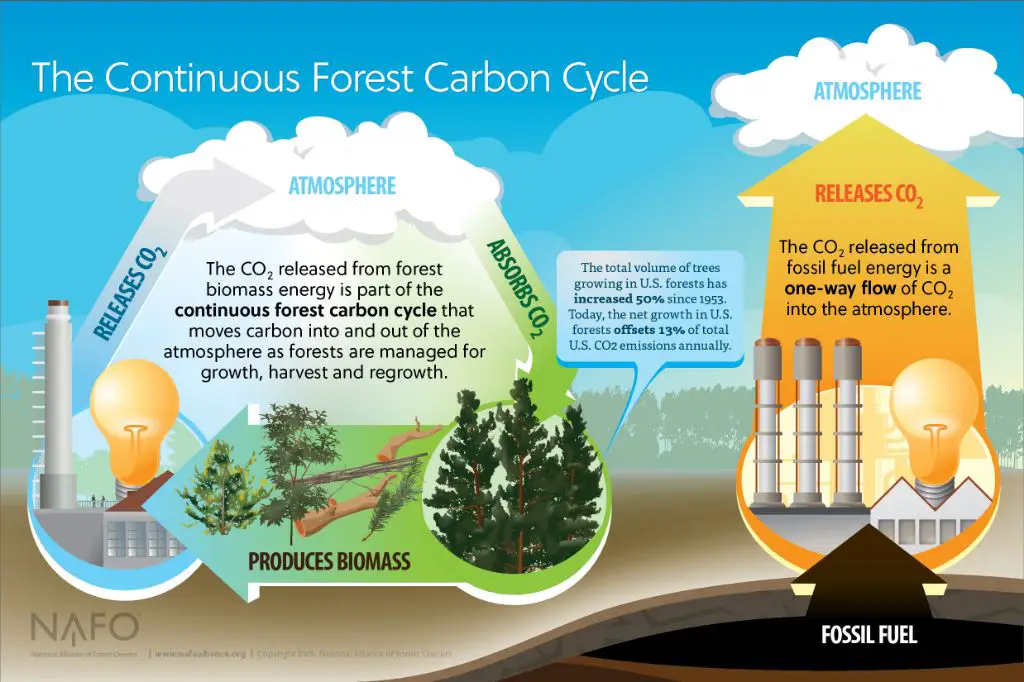
Biomass offers several key benefits that make it an attractive renewable energy source. First, biomass is completely renewable, since it comes from plants and organic materials that can be regrown over relatively short periods of time. This sets it apart from fossil fuels like coal, oil and natural gas, which take millions of years to form.
Second, utilizing biomass for energy helps cut down on waste and garbage. Many types of biomass come from waste streams, like crop residues, manure, and wood scraps from mills. Using these materials for energy generation reduces pressures on landfills.
Third, because biomass draws carbon out of the atmosphere as it grows, the carbon released when biomass is burned is recaptured when new plants grow. This makes biomass a carbon neutral energy source. Fossil fuels, on the other hand, release carbon that has been locked underground for ages, increasing the total amount of carbon in the atmosphere.
Challenges of Biomass
While biomass offers many benefits as a renewable energy source, it also comes with some challenges that need to be addressed for its widespread adoption and use. Some of the main challenges with biomass include:
Expensive – The cost of biomass can be high compared to fossil fuels. Facilities to generate energy from biomass require large capital investments. The logistics of harvesting, collecting, storing, and transporting bulky biomass material adds to the costs.
Low Energy Density – Biomass has a relatively low energy density per unit weight and volume compared to fossil fuels. This means more storage space is needed for an equivalent amount of energy. More biomass feedstock is needed to produce the same amount of energy.
Transportation Logistics – Since biomass has a low energy density, transporting large quantities from the source to processing facilities can be challenging and expensive. Vehicles can only carry limited weight and volume. Multiple trips may be needed, adding time and costs.
These challenges can make biomass less economically competitive than conventional fossil fuels. However, research and development efforts to improve conversion technologies and reduce costs are helping to overcome these obstacles.
Biomass Conversion Methods
There are several methods used to convert biomass into usable energy forms. The main conversion methods include:
Combustion
Combustion is the simplest and most common method of converting biomass into energy. It involves directly burning biomass materials like wood, agricultural waste, and animal manure to produce heat and electricity. The heat from combustion can generate steam to run turbines and produce power. Combustion systems range from simple stoves for heating and cooking to large power plants that feed electricity into the grid.
Gasification
Gasification converts biomass into a combustible gas mixture by applying heat in an oxygen-limited environment. This gas, known as producer gas or syngas, contains carbon monoxide, hydrogen, and methane. It can be burned directly for heat and power generation. Gasification systems allow more efficient conversion of biomass with lower emissions compared to combustion.
Pyrolysis
Pyrolysis uses heat to thermally decompose biomass in the complete absence of oxygen. This converts the biomass into liquid bio-oil, solid charcoal, and gaseous compounds. The bio-oil can be refined into transportation fuels. Pyrolysis enables the production of dense, energy-rich bio-oil from raw biomass feedstocks.
Anaerobic Digestion
Anaerobic digestion utilizes microorganisms to break down biomass in an oxygen-free environment. This biological processing produces biogas containing methane and carbon dioxide. The methane-rich biogas can be used for heat and electricity generation. Anaerobic digestion is commonly used for organic waste streams like animal manure, food scraps, and sewage sludge.
Biomass Applications
Biomass has a wide variety of applications including generating electricity, heating homes and buildings, as transportation fuels, and in manufacturing consumer products. Here are some of the major ways biomass is put to use:
Electricity
Burning biomass fuels at high temperatures produces steam that can spin turbines to generate electricity. Biomass power plants convert feedstocks like crop residues, forest debris, and organic municipal waste into renewable energy. Biomass electricity production is a major source of renewable power worldwide.
Heating
Biomass can provide low-carbon heat for residential heating systems as well as district heating systems that warm multiple buildings. Wood chips, wood pellets, and other solid biomass fuels can fuel stoves and boilers for space heating and hot water. Using biomass for heating avoids fossil fuels and supports local economies.
Biofuels
Biomass can be refined into liquid fuels called biofuels to power cars, trucks, tractors, and jets. Common types of biofuels include biodiesel, renewable diesel, ethanol, and sustainable aviation fuels. Biofuels are increasingly blended with petroleum fuels to reduce emissions and utilize local feedstocks.
Bioproducts
Biomass can also be made into non-fuel products like plastics, cosmetics, solvents, artificial flavors, and fabrics. For example, polylactic acid (PLA) made from corn and sugarcane is used to produce compostable cups, packaging, and fibers. Using biomass feedstocks for bioproducts reduces demand for fossil fuel inputs.
Biomass Sustainability
Sustainability is a key consideration for biomass energy. While biomass can provide renewable energy, it’s important that biomass resources are managed carefully to avoid depletion or negative environmental impacts.
One way to support biomass sustainability is through proper crop rotation for energy crops. Rotating annual crops helps replenish soils, control pests, and manage nutrients. For example, rotating between corn, soybeans, and grasses can promote soil health.
Sustainable forest management is also integral. Harvesting excess wood, diseased trees, and forest residues for biomass can improve a forest’s health. But forests must be managed carefully to allow regrowth and avoid over-harvesting.
Carbon accounting is another sustainability factor. Biomass emits carbon when burned, but this is balanced by the carbon absorbed as plants grow. Done responsibly, biomass can provide carbon-neutral energy. But impacts vary for different feedstocks and land uses.
Overall, conscientious management and agricultural practices are needed to utilize biomass resources in sustainable ways. With proper stewardship, biomass can be a renewable, eco-friendly energy solution.
Biomass Around the World
Biomass is used widely around the world as an energy source. Some of the major producers and consumers of biomass globally include:
China – China is the largest producer of biomass globally, with crop residues, forest biomass, and animal manure contributing significant amounts to its biomass production. China utilizes biomass for heating and cooking in rural areas as well as for large-scale electricity generation.
Brazil – As a major agricultural producer, Brazil generates large amounts of biomass from sugarcane and other crops. Bagasse, the residual material after sugar extraction from sugarcane, is burned by mills to generate heat and electricity.
United States – The US produces substantial amounts of biomass from forest resources and agricultural residues. Biomass represents about 5% of US energy generation, used mainly for industrial process heating and power generation.
India – India is another major agricultural producer and relies on biomass like crop residues, cattle dung and firewood to meet nearly one quarter of its energy demand, especially in rural regions.
Indonesia – As the world’s largest producer of palm oil, Indonesia generates huge quantities of palm kernel shells and fibers that are burned to produce heat and electricity for the mills as well as to power boilers for process heating.
Ethiopia – Nearly 90% of Ethiopia’s energy comes from biomass, primarily fuelwood and dung. These traditional biomass sources are used extensively for cooking and heating homes in rural areas.
Nigeria – Nigeria gets about 50% of its energy from traditional biomass sources. Fuelwood, charcoal and crop waste are widely used for household cooking and small-scale agricultural processing.
Future of Biomass
The future looks bright for biomass as an important renewable energy source. Here are some key trends in advanced biofuels and the role biomass will play in the renewable energy mix:
Advanced Biofuels
There is a lot of research and development going into advanced biofuels that can provide even greater benefits than conventional biofuels. These include:
- Algae-based biofuels – Algae can be grown using marginal land and water resources while producing high oil yields for conversion to biodiesel or jet fuel.
- Cellulosic ethanol – Using enzymes to break down non-food plant materials to produce ethanol, reducing food vs fuel tradeoffs.
- Biobutanol – Has properties closer to gasoline and can use existing infrastructure.
Role in Renewable Energy
Biomass will continue to play a key role in the renewable energy mix due to its unique advantages:
- Carbon neutral and sustainable when produced correctly.
- Dispatchable and able to provide baseload power unlike intermittent solar/wind.
- Feedstock flexibility from waste to dedicated energy crops.
- Ability to produce liquid fuels for transportation.
With continued technology improvements and sustainable practices, biomass can provide a clean, renewable energy source far into the future.
Conclusion
Biomass is an important renewable energy source that has the potential to reduce dependence on fossil fuels and mitigate climate change. This article provided an overview of the major types of biomass feedstocks, including plant and animal matter, agricultural residues, forestry materials, and organic waste. Some benefits of biomass highlighted include its abundance, renewability, carbon neutrality when sourced sustainably, and flexibility as an energy source.
However, there are also challenges with large-scale biomass implementation, like the high costs of collecting and transporting bulky feedstocks, impacts on food security, and the need for improved conversion technologies. Biomass can be converted through various processes into solid, liquid, and gaseous fuels that have diverse applications in heating, electricity, and transportation.
With the growth of bioenergy markets worldwide and increasing policy support, biomass has the potential to play a larger role in energy systems globally. But further investment, innovation, and sustainable practices will be needed to scale up biomass to make a significant dent in fossil fuel use. Overall, biomass remains a versatile renewable resource that can supplement our energy mix in a carbon-constrained world.

